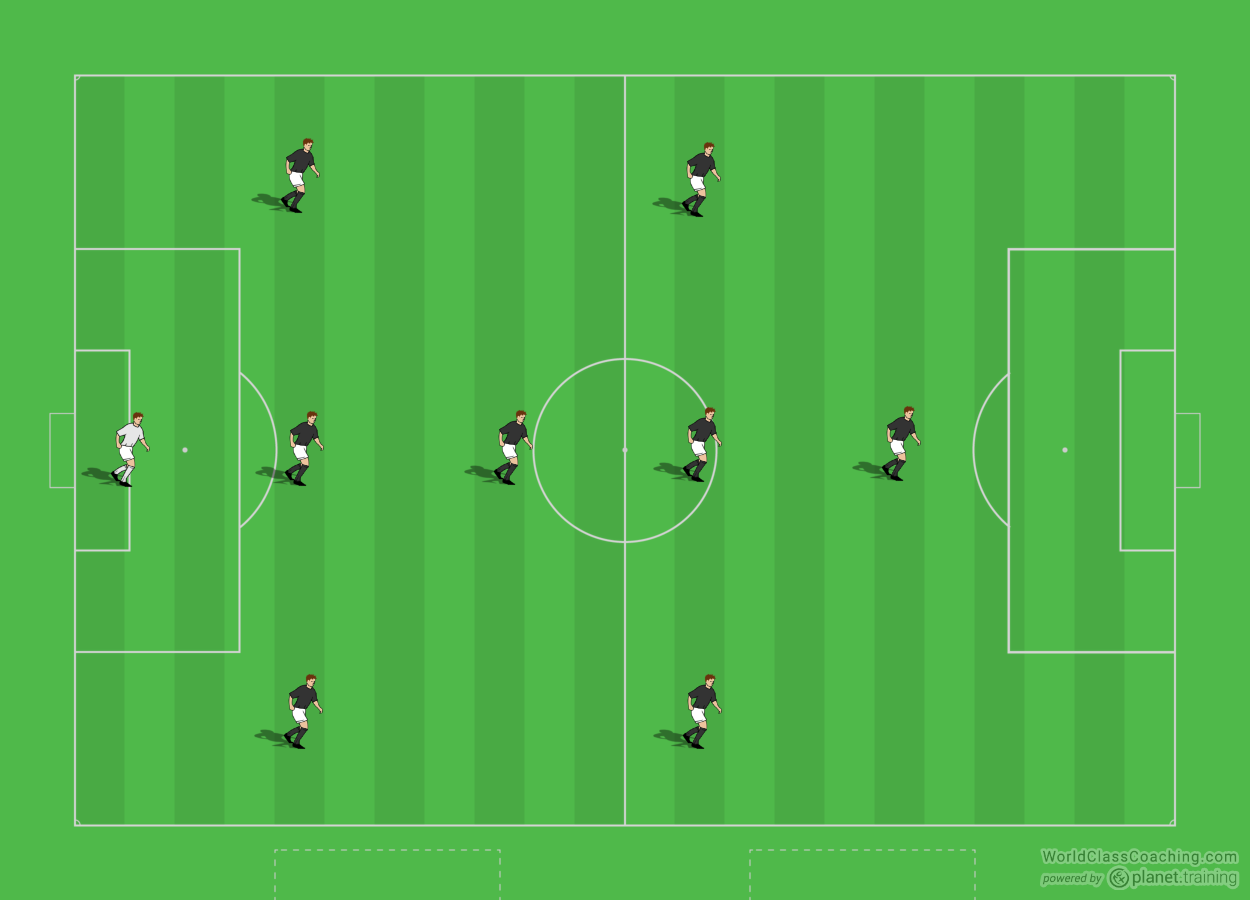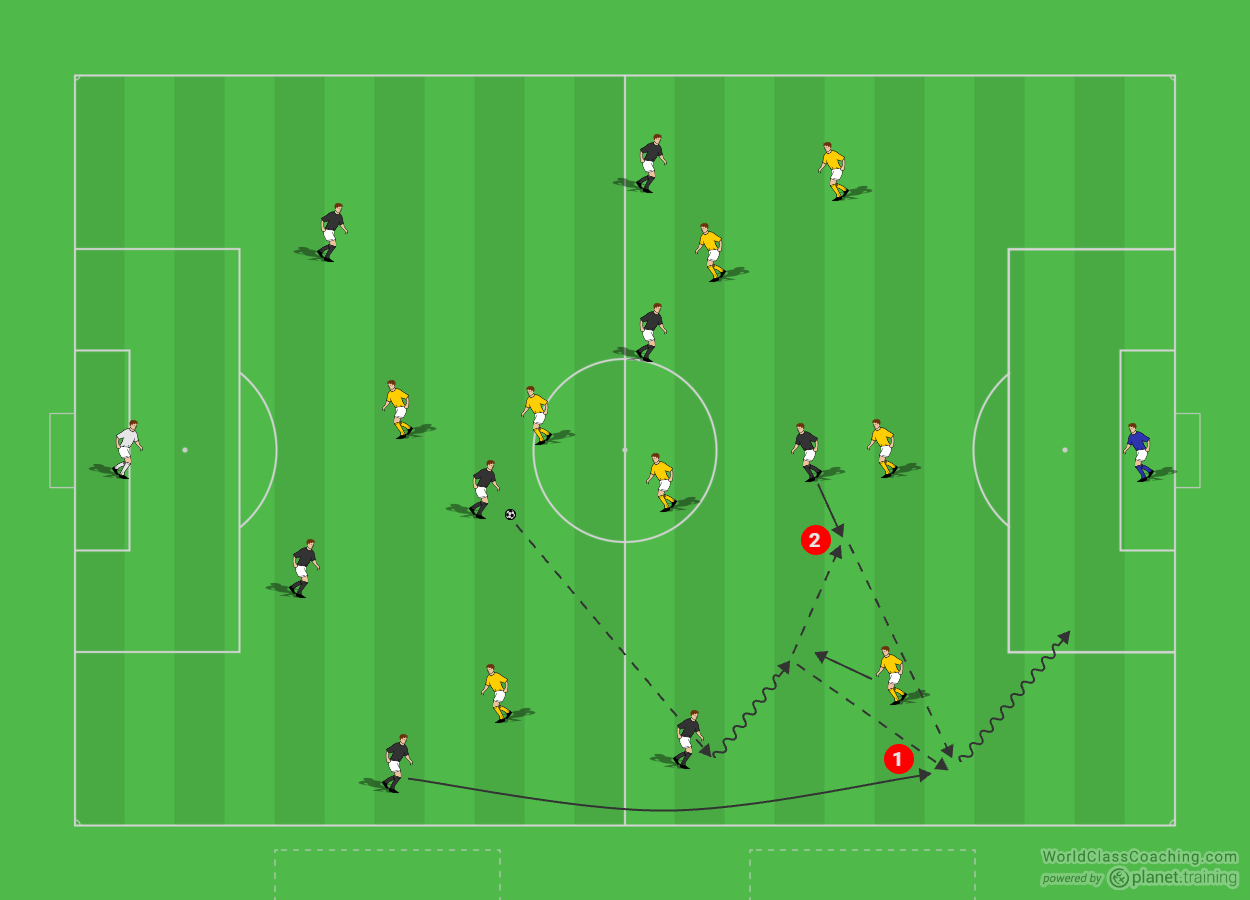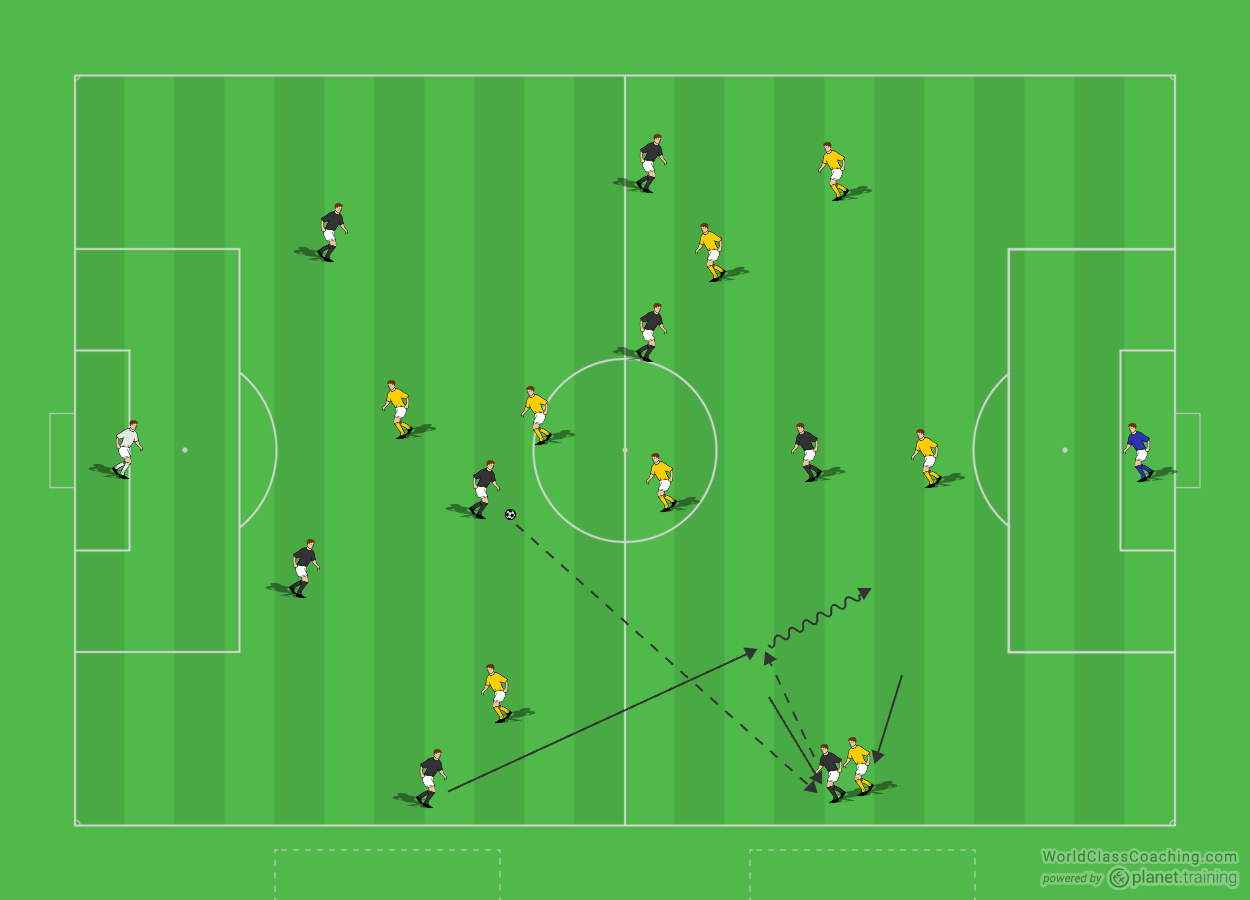By Sean Pearson
With the new USSF mandated birth year and small sided games changes there is a lot of trial and error regarding formations and systems of play. Instead of 8v8 formations, as coaches, we are now trying to figure out how to position our players in the new 7 v 7 and 9 v 9 formations. Some clubs have an academy structure where all teams must play the same formation, others allow coaches to choose what works for their team because players in each team have different attributes.
In these Systems of Play articles, I aim to address a wide range of 7 v 7, 9 v 9 and 11 v 11 formations and ways in which to use your players to your advantage.
Formation
This formation could also be called a 3-4-1 depending on your preference, it has 2 central midfielders but they are not side by side, one is defensive and the other is more attacking. The 11 v 11 formation relatable to this is the 4-2-3-1.

How to Use the Full Backs in Attack
In the modern game full backs are a huge part of the offense. They are expected to get forward, at least in the pros. With young players they are obviously not as athletic yet. It is also more difficult because younger teams have trouble maintaining possession to enable enough time for the full back to get forward.
All things considered, if you have players with the ability to get forward from this position it is an excellent form of attacking as you can outnumber an opposition full back 2v1.
When your full back sees the winger in space out wide and a center midfielder or center back shape to pass the ball out wide, now is the time to start their overlap. The winger then drives in field to manipulate the movement off the opposition full back:
- If the defending full back goes with the winger infield the space opens up for the attacking full back. The winger plays the ball in to space the for full back to drive towards goal.
- If the defending full back positions themselves to stop the ball to the attacking full back a larger gap is created between them and the center back as long as the striker starts centrally. The striker and winger sees the position of the defending full back, and so combine to play through the gap to the attacking full back.

As well as overlaps to create 2 v 1’s and help attacks, full backs can come infield and underlap the winger. This again manipulates the position and movement of the defending full back. This time, when the ball is played to the winger, the full back sees the defending full back get close to the winger. Instead of overlapping around both players, they run into the space in front of the winger.
The pass should be played into the space for the advancing full back so they can now drive with the ball forwards. The winger then has options of which way to run to help the attack.

If you want your full backs and team to play this way it is important to encourage forward runs often and for players to recognize when and where they should go depending on the positioning of the opposition players.
By Sean Pearson. Sean is also the author Coaching Team Shape in the 3-3-1, Coaching Team Shape in the 4-2-3-1 and Coaching Team Shape in the 4-3-3


